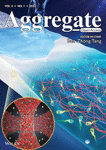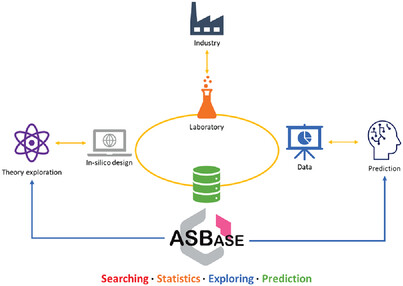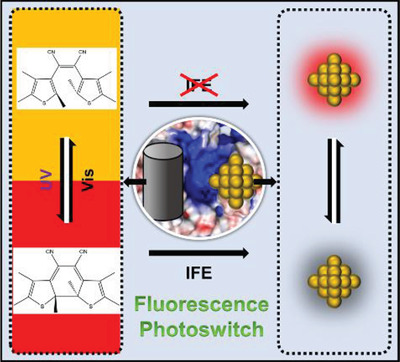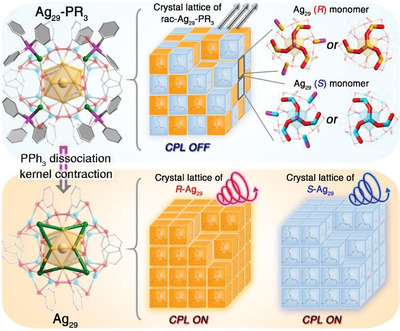Journal list menu
Export Citations
Download PDFs
FRONT COVER
Front Cover: Unusual switching of ionic conductivity in ionogels enabled by water-induced phase separation
- First Published: 20 February 2023
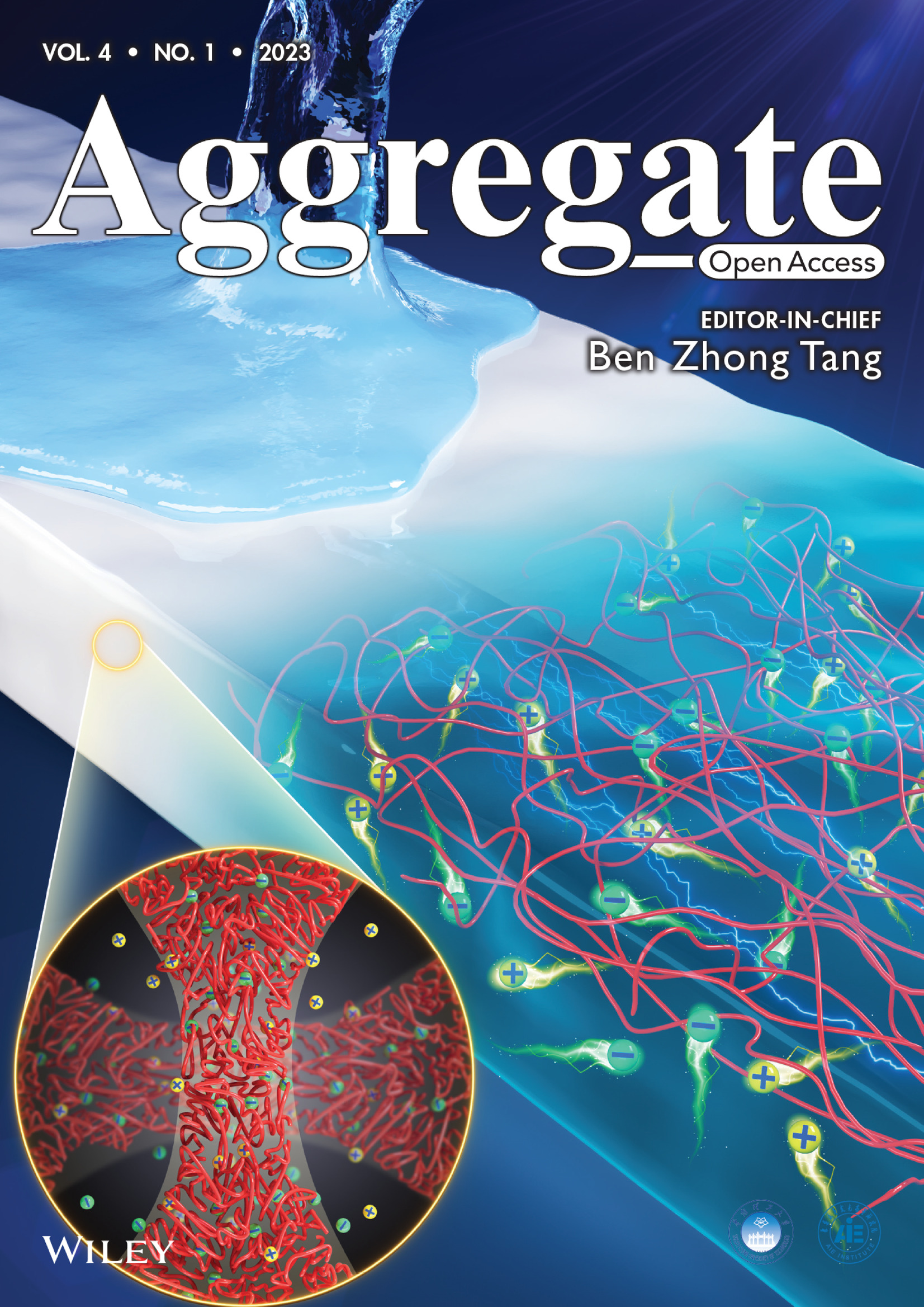
Zhang et al. develop an unprecedented humidity-responsive ionogel. At low humidity, the ionogel exhibits a high ionic conductivity due to the high mobility of the ions within the swollen polymer networks. When the ambient humidity rises, the ion motion is restricted by the strong polymer chain aggregation induced by water, resulting in a lower ionic conductivity. (e249)
INSIDE FRONT COVER
Inside Front Cover: Magnetically accelerated thermal energy storage within Fe3O4-anchored MXene-based phase change materials
- First Published: 20 February 2023

Wang et al. anchor Fe3O4 nanoparticles between the layers and the surface of 2D MXene for the infiltration of myristic acid for photothermal conversion and storage. Benefiting from the synergistic localized surface plasmon resonance effect of MXene and Fe3O4 nanoparticles, MXene@Fe3O4-based composite PCMs harvest an ultrahigh photothermal conversion efficiency, showing great application potential for thermal management in extremely cold environments. (e248)
INSIDE BACK COVER
Inside Back Cover: Aggregation-induced emission luminogens for organic light-emitting diodes with a single-component emitting layer
- First Published: 20 February 2023
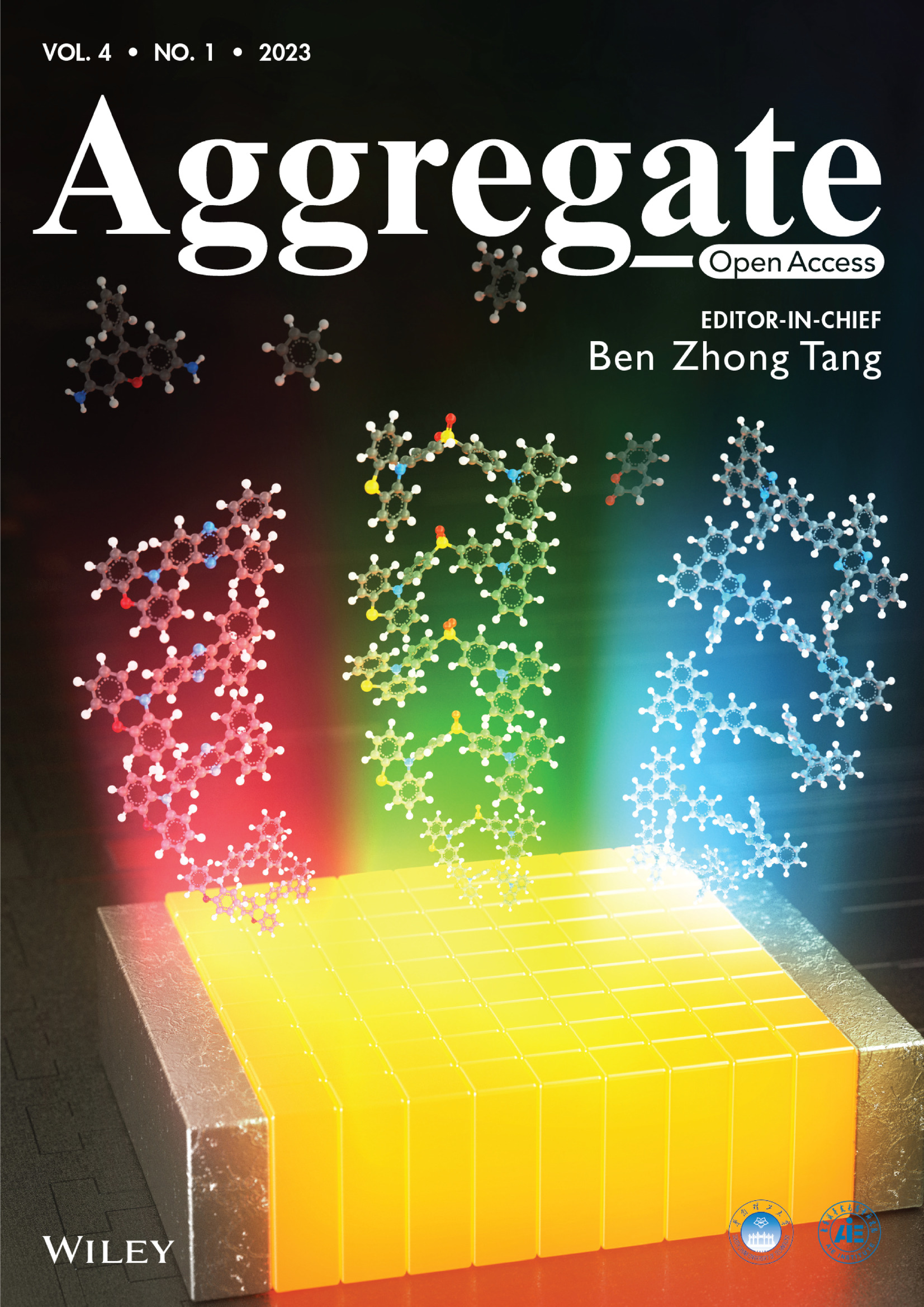
Aggregation-induced emission luminogens (AIEgens) have received considerable attention from researchers owing to their high photoluminescence quantum yield (PLQY) in the aggregated state. In article number (e199), Dong Hoon Choi and co-workers have reviewed the recent molecular design strategies as well as photophysical and electroluminescent properties of AIEgens used in non-doped organic light-emitting diodes.
BACK COVER
Back Cover: ASBase: The universal database for aggregate science
- First Published: 20 February 2023
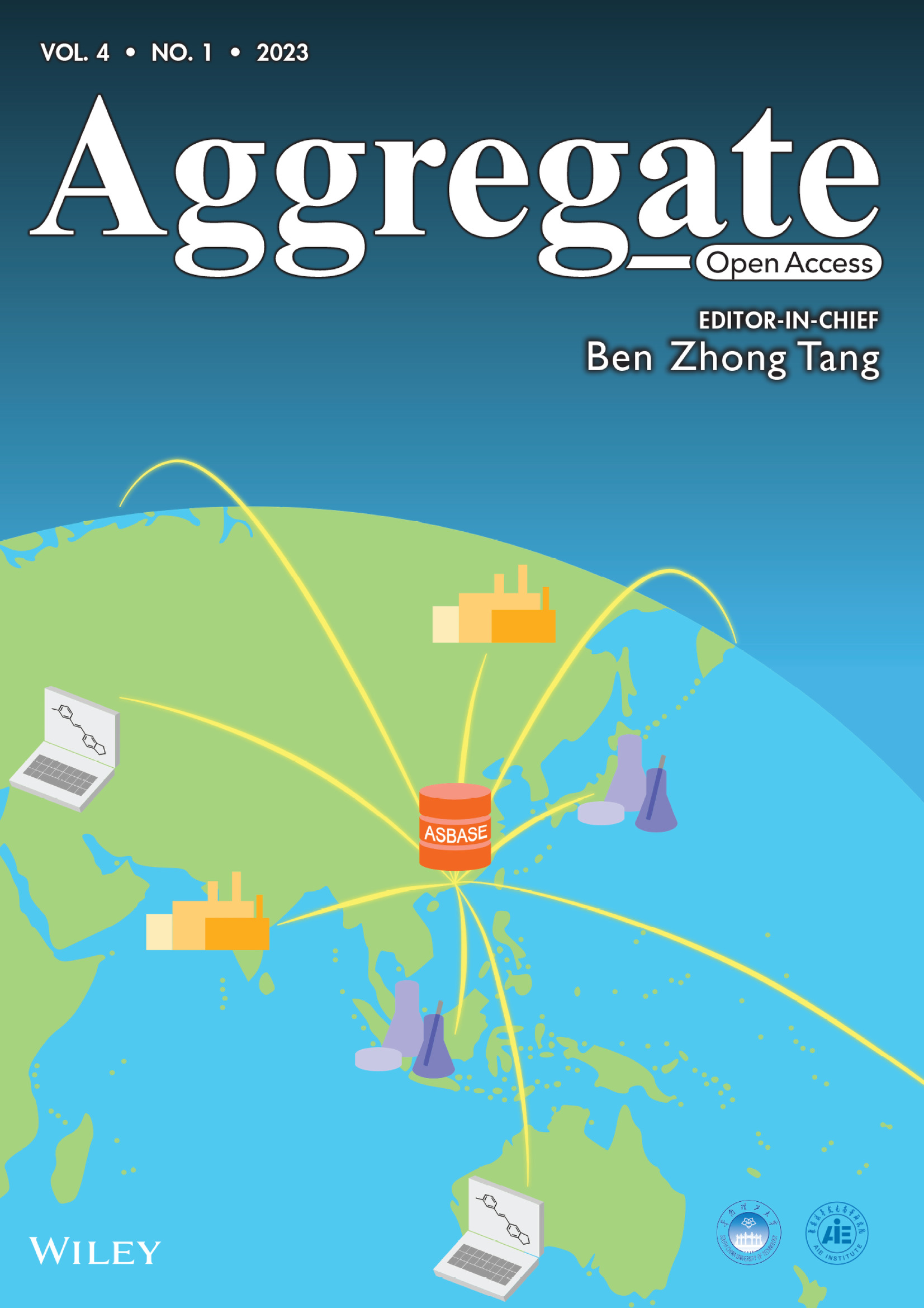
The ASBase, which is a universal database for aggregate science, is connecting the nodes in laborotary, industry and individuals with information and scientific data. (e263)
ISSUE INFORMATION
REVIEWS
3D bioprinted organ-on-chips
- First Published: 01 May 2022

Organ-on-chip platforms have the potential to revolutionize personalized therapies by a more realistic recapitulation of human organs in vitro, enabling the study of therapeutical outcomes and conceivable adverse side-effects of administered medicine. Integration of 3D bioprinting with organ-on-chip technologies can facilitate the fabrication of 3D multicellular chips with rapid turn-around time for researchers with limited microfabrication knowledge.
Chiral porphyrin assemblies
- First Published: 22 April 2022
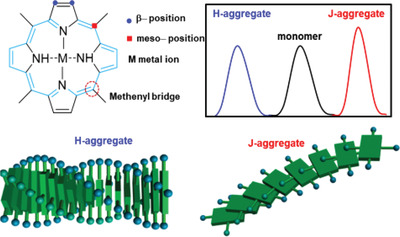
The study of the chiral assembly of porphyrins can aid biomimetic research and the exploration of functional materials. In this review, recent developments of chiral porphyrins assemblies are highlighted. We also provide an overview of the applications of chiral porphyrin assemblies in the fields of sensing, catalysis, and optics.
Aggregation-induced emission luminogens for organic light-emitting diodes with a single-component emitting layer
- First Published: 23 April 2022
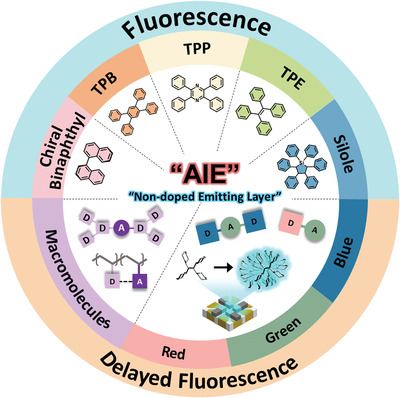
A comprehensive overview of the development of AIE luminogens for nondoped OLEDs is presented. This article provides the molecular design strategies as well as photophysical and electroluminescent properties of AIEgens used in nondoped OLEDs. The results of studies on nondoped OLEDs based on fluorescent and delayed fluorescent AIEgens are summarized. The correlation between molecular structures, optical, and device properties in AIE-based fluorescent and TADF emitters are analyzed.
Achieving purely organic room temperature phosphorescence in aqueous solution
- First Published: 12 July 2022
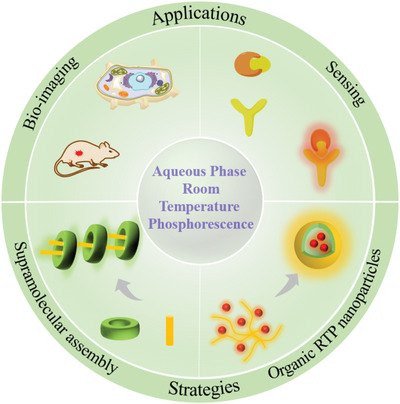
Graphical abstract. Purely organic room temperature phosphorescent (RTP) materials have aroused increasing interests; however, achieving aqueous phase organic RTP emission is still a formidable challenge. This review summarizes the recent advances of organic materials with RTP emission in aqueous solution, primarily focusing on the efficient design strategies and their promising applications in bio-imaging and sensing, with the hope to provide inspiration for aqueous phase organic RTP materials.
Supramolecular chiral polymeric aggregates: Construction and applications
- First Published: 06 September 2022
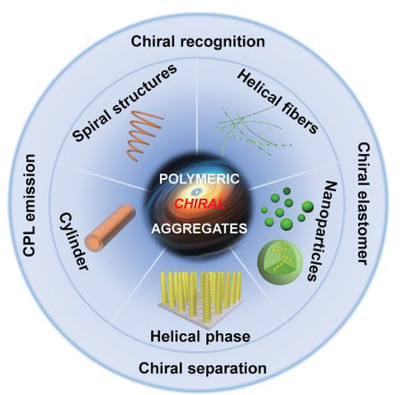
Recently polymers become excellent candidates to construct artificial chiral aggregates, due to the diverse conformations and components. Although regulating the chiral morphology is challenging in polymer aggregates, it attracts lots of research interests because of its crucial role in applications. Herein, this review summarizes typical examples of construction methods of supramolecular chirality in aggregated state and their applications.
Atomically precise copper nanoclusters as ultrasmall molecular aggregates: Appealing compositions, structures, properties, and applications
- First Published: 13 September 2022
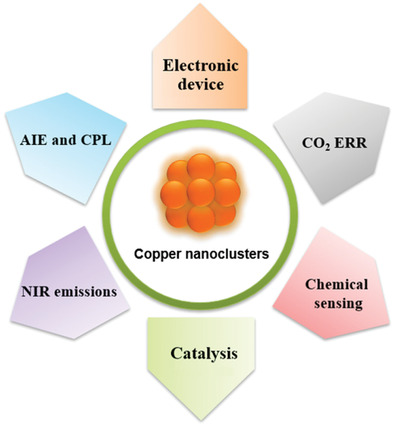
In the present review, we provide an overview on copper nanoclusters (CuNCs) that exhibit atomically precise compositions and structures to simultaneously show functional properties and applications. This review not only offers an understanding of CuNCs as an emerging class of molecular aggregates, but also provides guidelines for future exploration of their novel properties and practical applications.
RESEARCH ARTICLES
ASBase: The universal database for aggregate science
- First Published: 01 September 2022
Ratiometric hypoxia detection by bright organic room temperature phosphorescence of uniformed silica nanoparticles in water
- First Published: 21 June 2022
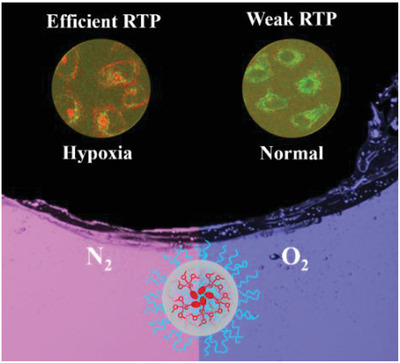
Incorporating organic phosphors to silica nanoparticles by covalent bonds shows high phosphorescence quantum yields (up to 22%) and long lifetimes (up to 3.5 ms) in aqueous phase. The dual fluorescence/phosphorescence of the monochromophore within the porous SiNPs successfully realized ratiometric hypoxia detection with ultrasensitivity (KSV = 449.3 bar−1).
A fluorescent film sensor for high-performance detection of Listeria monocytogenes via vapor sampling
- First Published: 28 April 2022

A newly designed AIEgen-based fluorescent film sensor is developed and used successfully, for the first time, to detect gaseous 3-hydroxy-2-butanone, a biomarker of Listeria monocytogenes. The sensor depicts fast, sensitive, selective, and fully reversible sensing performance toward the analyte, as evidenced by the reliable finding of the foodborne pathogen at the very early stage.
Phenazine-based supramolecular photosensitizing assemblies: A “smart” selectivity control on catalytic activity of Pd(II) nanoparticles
- First Published: 07 April 2022

The present study investigates the development of “smart” directing supramolecular photosensitizing assemblies having the potential to direct the progress of reaction in a particular pathway (heterocoupling) over the other available reaction pathways (hydroxylation and homocoupling). The strong affinity of these assemblies toward Pd2+ ions generate stable PPA@Pd NPs for the Suzuki cross-coupled reaction under aerial conditions, mixed aqueous media, and visible light irradiation.
Aggregated carbon dots-loaded macrophages treat sepsis by eliminating multidrug-resistant bacteria and attenuating inflammation
- First Published: 19 April 2022
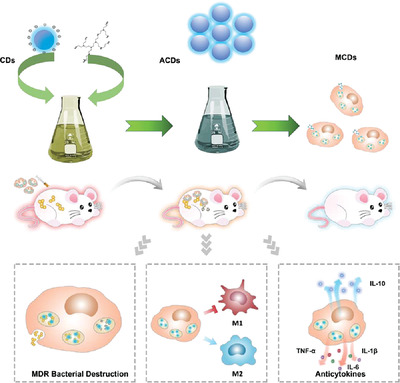
Highly antibacterial and photoluminescent nanoparticles (ACDs), formed from carbon dots (CDs) and polyethyleneimine, are cocultured with macrophages to become localized at lysosomes. The resultant ACD-loaded macrophages (MCDs) show a significantly enhanced multidrug-resistant bacteria-killing ability. They possess superior anti-inflammatory effects, including inhibiting proinflammatory (M1) and stimulating anti-inflammatory (M2) macrophages, therefore, improving the inflammatory cytokines and ultimately resulting in increased sepsis survival.
Magnetically accelerated thermal energy storage within Fe3O4-anchored MXene-based phase change materials
- First Published: 17 June 2022
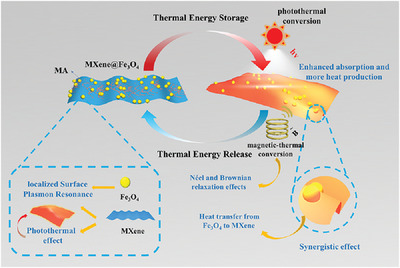
Benefiting from the LSPR effect of MXene and Fe3O4 nanoparticles, MXene@Fe3O4-MA composite PCMs harvest a near-record photothermal conversion efficiency. MXene can capture photons and convert solar energy into heat energy efficiently, and the in-situ anchored Fe3O4 nanoparticles further enhance the photothermal conversion efficiency. Simultaneously, MXene@Fe3O4-MA composite PCMs are endowed with excellent paramagnetism, and realize efficient magnetic-thermal conversion.
Unusual switching of ionic conductivity in ionogels enabled by water-induced phase separation
- First Published: 12 June 2022
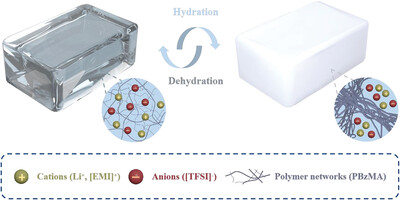
A humidity-responsive ionogel with anomalous switching of ionic conductivity was introduced. This unique material shows a reversible change in ionic conductivity (over two orders of magnitude) enabled by water-induced phase separation. This phase separation behavior was sophisticatedly studied through the effect of components, microscopic morphology and molecular dynamics simulations. To demonstrate this, the ionogel was applied as a smart electrolyte to prepare a humidity-responsive supercapacitor. This design provides a new perspective on using ubiquitous resources as the trigger for smart iontronics.
An AIEgen/graphene oxide nanocomposite (AIEgen@GO)-based two-stage “turn-on” nucleic acid biosensor for rapid detection of SARS-CoV-2 viral sequence
- First Published: 11 April 2022
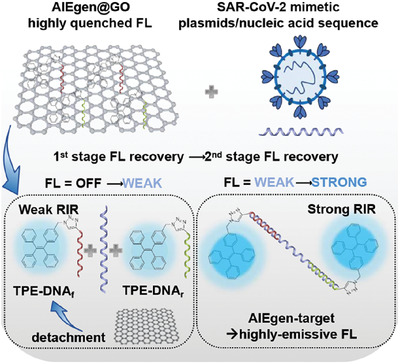
An AIEgen-graphene oxide (GO) nanocomposite-based assay is designed for rapid detection of SARS-CoV-2 nucleic acids. The sensing mechanism is based on two-stage fluorescence signal recovery due to fluorescence resonance energy transfer (FRET) effect by detaching AIEgen from GO surface and restricted intramolecular rotation (RIR) effect by formation of nucleic acid duplexes.
Fabrication of luminescent patterns using aggregation-induced emission molecules by an electrolytic micelle disruption approach
- First Published: 17 April 2022
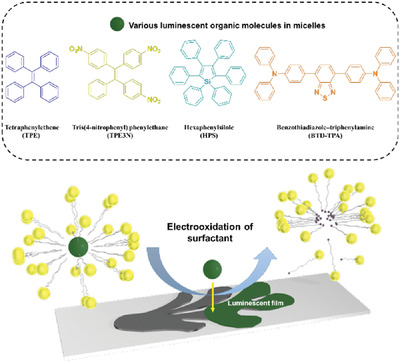
The AIEgens including tetraphenylethene (TPE), tris(4-nitrophenyl)phenylethene (TPE3N), hexaphenylsilole (HPS), and benzothiadiazole–triphenylamine (BTD-TPA) are incorporated in micelles composed of electroactive surfactants. The AIEgens are released and deposited on patterned electrodes under the application of potentials, producing luminecent patterns with various colors.
Denatured proteins show new vitality: Green synthesis of germanium oxide hollow microspheres with versatile functions by denaturing proteins around bubbles
- First Published: 01 May 2022
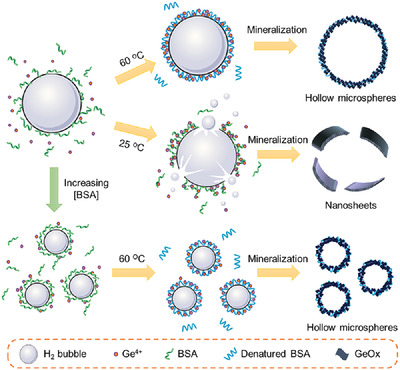
Denatured proteins show new vitality for hollow structures with versatile functions. Denatured bovine serum albumin can trigger an unusual biomineralization for the simple, green, and shape-controllable synthesis of GeOx hollow microsphere (HMS). GeOx HMS shows great application potential for intelligent gut-targeted pesticide delivery, label-free COVID-19 immunosensors, and nonenzymatic H2O2 sensors under physiological conditions at negative potentials.
A versatile AIE fluorogen with selective reactivity to primary amines for monitoring amination, protein labeling, and mitochondrial staining
- First Published: 07 June 2022

A chromone-based aggregation-induced emission (AIE) fluorogen called CMVMN as a self-reporting bioconjugation reagent for selective primary amine identification in situ was reported, along with its applications of monitoring bioprocesses of amination, protein labeling, and mitochondria staining. It is capable of solid-state sensing and its electrospun films are manufactured for visualization of amine diffusion and leakage process.
Conformational isomerization: A novel mechanism to realize the AIE-TADF behaviors
- First Published: 04 June 2022
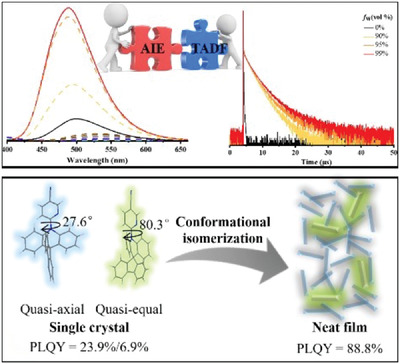
Due to conformational isomerization, the emitter exhibits unique AIE-TADF behavior. This is mainly because the QA conformers act as a host matrix to dilute TADF QE conformations in neat films, thereby suppressing ACQ and achieving high PLQY. This work proposes a new mechanism to understand the AIE-TADF behaviors and provides a new idea for extending the design of AIE-TADF materials.
Site-specific fabrication of gold nanocluster-based fluorescence photoswitch enabled by the dual roles of albumin proteins
- First Published: 08 June 2022
Secondary ligand engineering of nanoclusters: Effects on molecular structures, supramolecular aggregates, and optical properties
- First Published: 08 June 2022




